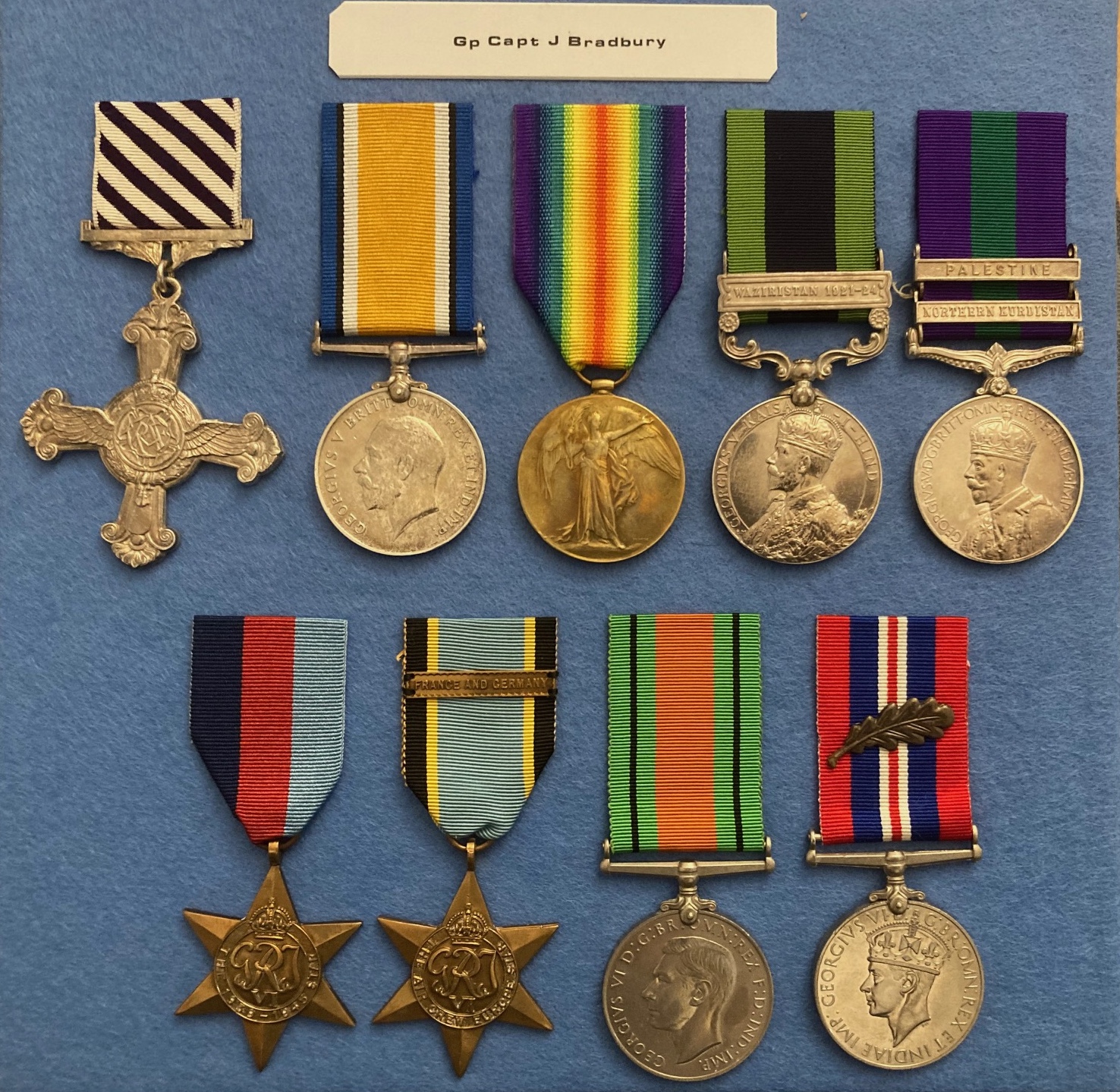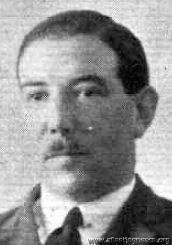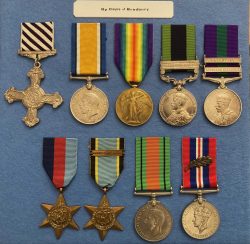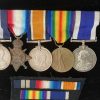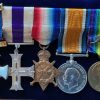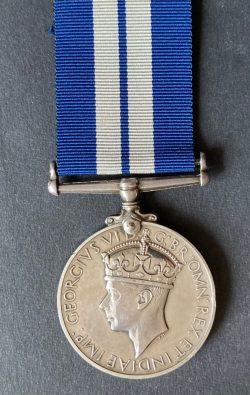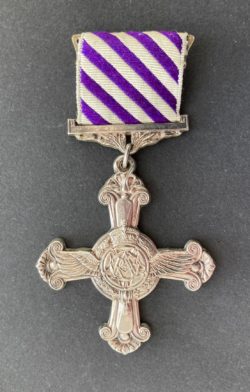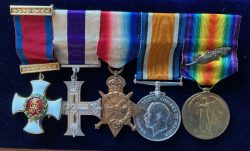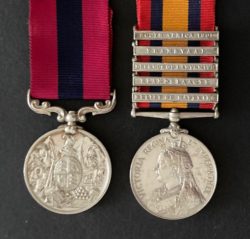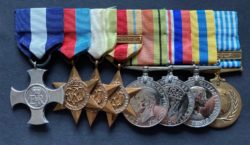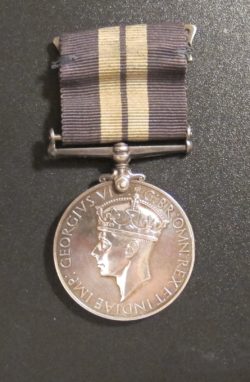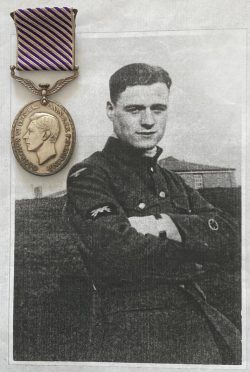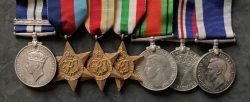Excessively rare 1932 Northern Kurdistan ‘immediate’ D.F.C. with fine recommendation to Wapiti pilot 30 Squadron, Royal Air Force, for his repeated gallantry in supporting a column of troops ambushed by a substantial rebel force, despite coming under heavy fire himself and being holed in both petrol tanks. He later commanded 33 Squadron in Gaza, Palestine, then later Group Captain, with a number of station commands during the Second World War, including Marston Moor and commanding No. 26 O.C.U.
£6,950.00
Out of stock
Distinguished Flying Cross, (GV), British War Medal , Victory Medals (2. Lieut. J. Bradbury. R.A.F.) India General Service 1908, clasp, Waziristan 1921-24 (F/O. R.A.F.), General Service Medal, crowned head, 2 clasps, Northern Kurdistan, Palestine (F/L. R.A.F.) 2nd clasp loose on riband as issued, 1939/45 Star, Air Crew Europe Star, clasp, France and Germany, Defence Medal, War Medal, with M.I.D. oak leaf,
Group Captain J. Bradbury
D.F.C. London Gazette 1 July 1932:
‘In recognition of gallant and distinguished service in Northern Kurdistan.’
The original recommendation states:
‘For exceptional courage, determination and initiative displayed in the leadership of a detachment of No. 30 (Bomber) Squadron stationed at Diana whilst affording air co-operation to a column of the Iraqi Army during recent operations against the Barzanis and associated tribes of Northern Kurdistan.
On 3rd April, 1932, when the Iraqi Column was in great difficulties owing to rebel attacks upon its transport, Flight Lieutenant Bradbury attacked the rebels and drove them off with bombs and machine gun fire. Despite shots through both petrol tanks he succeeded in returning to Diana, whence he returned to the attack in another aeroplane. In the second action his observer was fatally wounded. Three days later, Flight Lieutenant Bradbury piloted one of five aircraft which drove the rebels from their positions with heavy casualties.
The determination and persistence displayed by the personnel of the Royal Air Force detachment, who were flying over country the nature of which made forced landings impossible, undoubtedly saved the situation for the Iraqi Column, and it was due largely to Flight Lieutenant Bradbury’s leadership and example that the air attack was so successful.’
M.I.D. London Gazette 8/6/1944 and 1/1/1946.
The following with regard to the D.F.C. actions is found in the Air Ministry Report On The Operations Against Shaikh Ahmed of Barzan 1931-1932:
‘Advance of Dicol resumed.
On 30th March, Dicol resumed its advanced, and reached Zhazhok, on the high ground between the valleys of the Balikian and Birisia Rivers, the same day. Here it was delayed by appalling weather conditions and continuous heavy rain. A large party of tribesmen sniped the camp during the night 2nd/3rd April. On 3rd April, it was able to resume its advance towards Birisia, but it was soon discovered that the movement would be exceedingly difficult.
The entrance to the head of the Birisia valley was through a narrow “gateway” in a rocky cliff, allowing passage only in single file. A halt had to be made to improve this “gate”, and the column, after having passed through it, was found to have lengthened out considerably. The sides of the valley were steep, and offered plenty of cover to screen the enemy’s movements. As so often happens in the movement of a large column through rough or difficult country, the advanced guard pushed on too fast, and a wide gap soon developed between it and the main body. Realising the danger, the British officers tried to reach the head of the column and halt it, but the narrow track was blocked by transport, and the gap continued to widen.
Successful surprise by rebels near Wazhi.
It was at that moment (about 1430 hours local time) that a strong force of rebels descended suddenly on the rear of the column, striking in between the rear guard and the main body. They made, as they usually do, straight for the transport in search of loot. The civilian mule drivers, seized by panic, cut their loads, mounted their mules, and fled in all directions, throwing the column into confusion as they went. One of the picquets broke and fell back in confusion on the main body. Some of the Kurds got right down on to the track, and the situation became very critical. It was saved partly by the energy and gallantry of the British officers of the column and partly by the intervention of aircraft from Diana.
The two patrolling aircraft, Flight Lieutenant J. Bradbury and Sergeant H. V. Hudson, had at once located the rebels on the slopes above the column, and by pressing home a rapid succession of attacks from a very low altitude forced them to retire and take cover further up the hillside. Both these aircraft came under heavy and accurate fire, one of them [Bradbury] being forced to return to Diana with both petrol tanks shot through, while the observer of the other was shot in the foot.
Meanwhile, the officers of the British Mission were doing their utmost to restore order in the main body of the column and to re-establish the picquet line. They succeeded ultimately in persuading the commander of the advanced guard to return with his force to cover the head of the main body, and with the help of a few junior Iraqi officers and some of the N.C.O.’s, a defensive perimeter was at last organised.
During all this time the enemy were kept engaged by aircraft. Flight Lieutenant Bradbury and Sergeant Hudson had both been compelled for reasons stated above to return to Diana, but they had been promptly been replaced by the three remaining aircraft from Diana, led by Squadron Leader [’Bunty’] Frew, and it was not long before Flight Lieutenant Bradbury returned in Sergeant Hudson’s aircraft with the latter as observer. For the remainder of the afternoon these aircraft, reinforced by two others from Mosul, succeeded in maintaining continuous attacks on the rebels, and undoubtedly kept the latter sufficiently busy to prevent them taking full advantage of the confused and disorganised condition of the column. In the course of these attacks, Sergeant Hudson was fatally wounded, and died soon after the return of the aircraft to Diana. In this action the Royal Air Force casualties were relatively high, and most of the aircraft were badly damaged by fire from the ground. This was due to the low altitude from which the attacks were carried out. The aircraft would, in any event, have had to descend very low before the rebels could be located in the thick cover on the slopes above the track. From what they could see of the column the pilots rightly gauged the situation as extremely critical and dangerous, and accordingly took greater risks in pressing home their attacks than would otherwise have been necessary.’
John Bradbury, born in Hampstead, London in April 1898. He was educated at Haberdashers and Tollington Schools, served as a Volunteer Ambulance Driver with the British Red Cross September 1914 – February 1915. He enlisted as a Sapper in the Royal Engineers in June 1915, before volunteering for service with the Royal Flying Corps in 1917 (he saw no overseas service until some date after 1 January 1916).
Bradbury carried various pilot training before being commissioned in February 1918. He was posted to France, 2 November 1918, and on to serve with 209 Squadron (Camels) at Frodnent.
Bradbury remained in France after the war with 80 Squadron (Snipes), and moved with the Squadron to Aboukir, Egypt in June 1919. He returned to the UK the following year, prior to being posted to India with 5 Squadron (Bristol Fighters) in November 1921. Bradbury served with 27 Squadron (DH.9a’s) from Risalpur, 1923-1926 (entitled to ‘Waziristan 1925’ clasp, but elected for ‘Waziristan 1921-24’ clasp).
Postings back to the UK with 15 Squadron and the A. & A. E. Establishment. Bradbury was posted for operational flying with 30 Squadron (Wapitis), Mosul, Iraq in January 1932. He served for two years with the Squadron prior to being posted to the Maritime Aircraft Experimental Establishment at Felixstowe in April 1934.
Bradbury was posted for service with 33 Squadron (Harts), Gaza, Palestine in September 1935. Having advanced to Squadron Leader he was appointed to the command of the Squadron the following year.
As Wing Commander in January 1939, he was posted to command 77 Squadron (Whitleys) at Finngingley the following month. Bradbury served as Deputy Director of Intelligence (3), Department of CAS, Air Ministry, November 1939 – October 1941. He then served as Commanding Officer of R.A.F. Marston Moor, October 1941 – December 1942. During which time he survived an undercarriage collapse on an Eagle aircraft which he was flying from Linton-on-Ouse to Marston Moor, 19 July 1942. Bradbury served as Commanding Officer of No. 26 O.C.U., R.A.F. Wing, December 1942 – February 1944 (Wellingtons of this unit took part in operational sorties during this time).
Bradbury served as Commanding Officer of R.A.F. Down Ampney, February – November 1944 (Dakotas from this station took part in operations prior to D-Day, and Flight Lieutenant D. Lord of 271 Squadron was also awarded a posthumous Victoria Cross flying from here at the time of Bradbury’s command).
Bradbury commanded No. 11 Wing, 46 Group from November 1944, and subsequent appointments included as Officer Commanding for Pocklington, Blackbushe and Cardington. He retired as Group Captain in May 1949, and died in July 1981.
Neat offic
